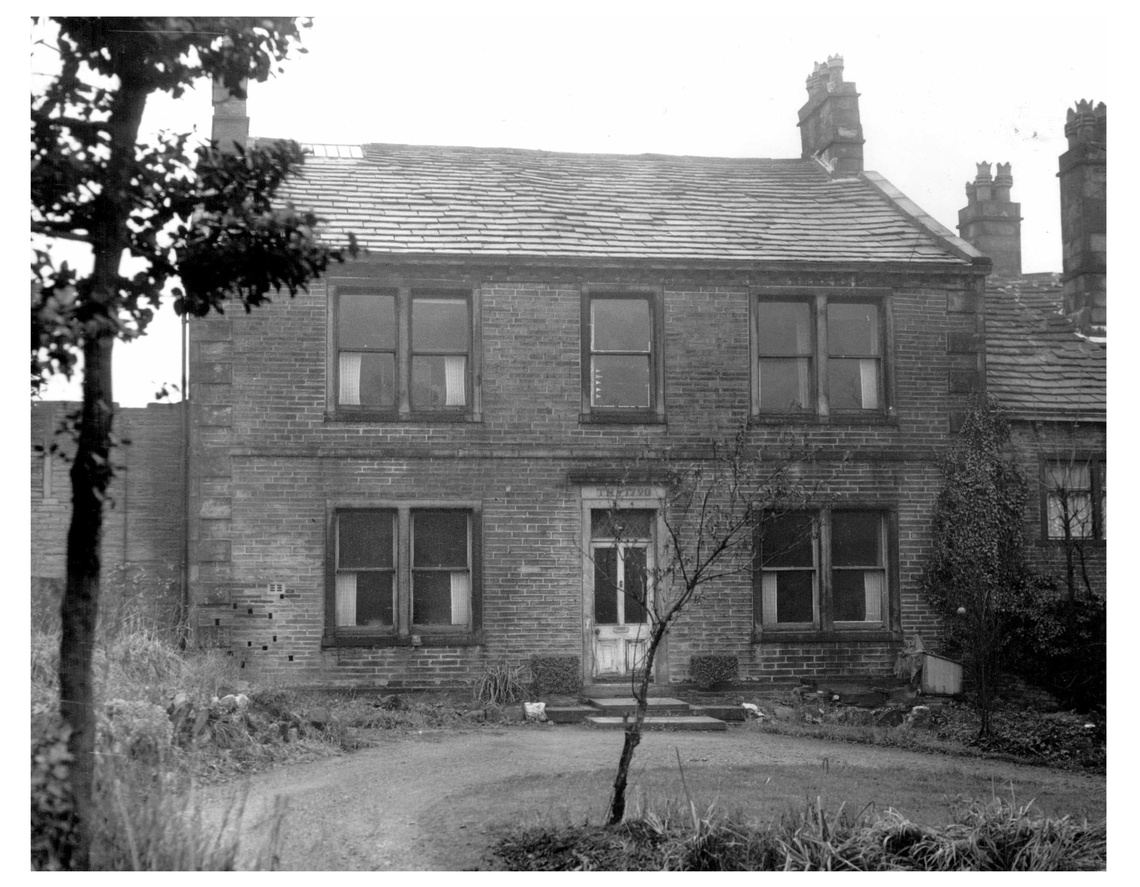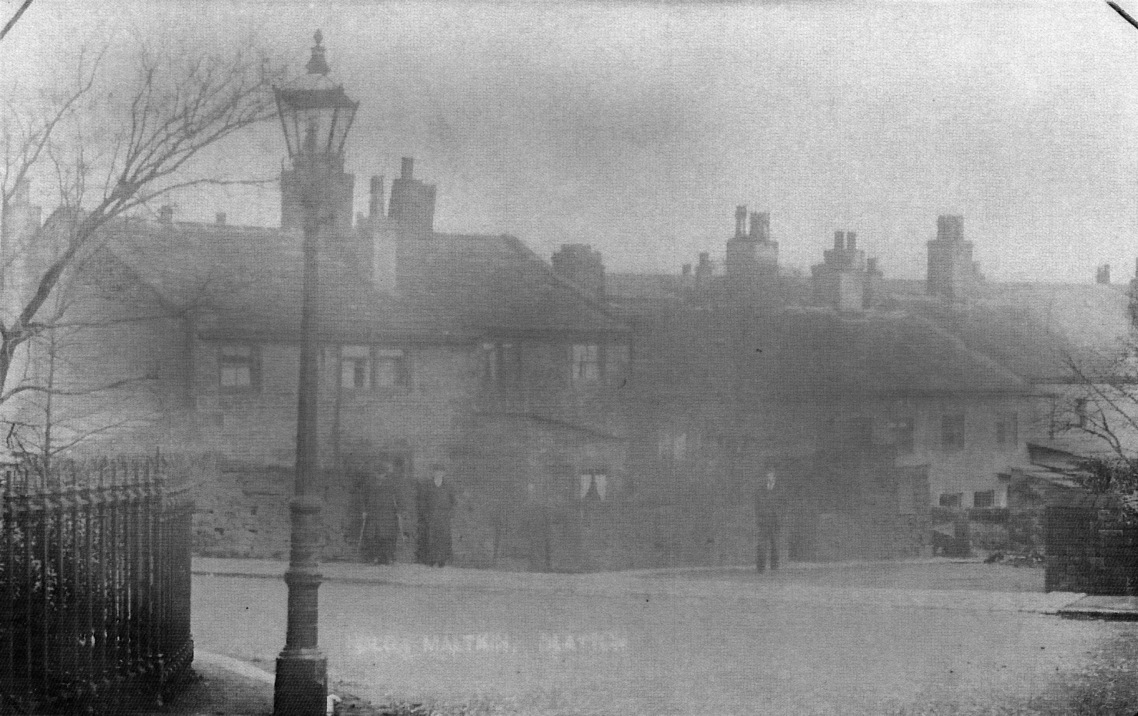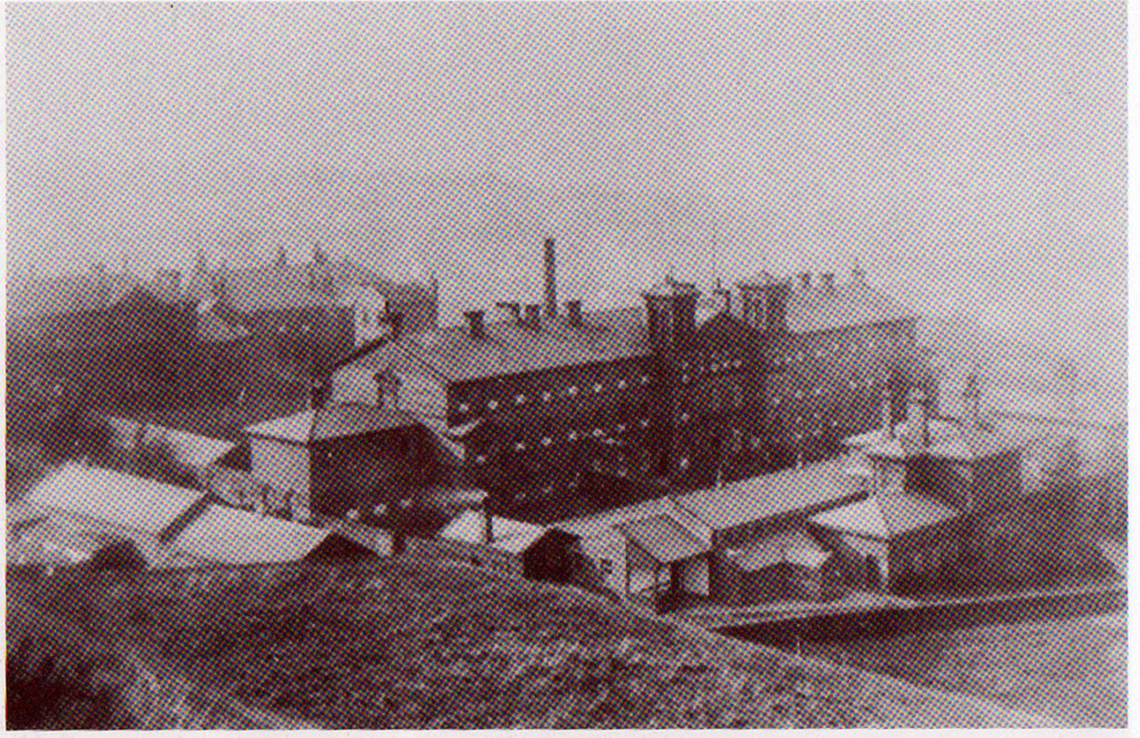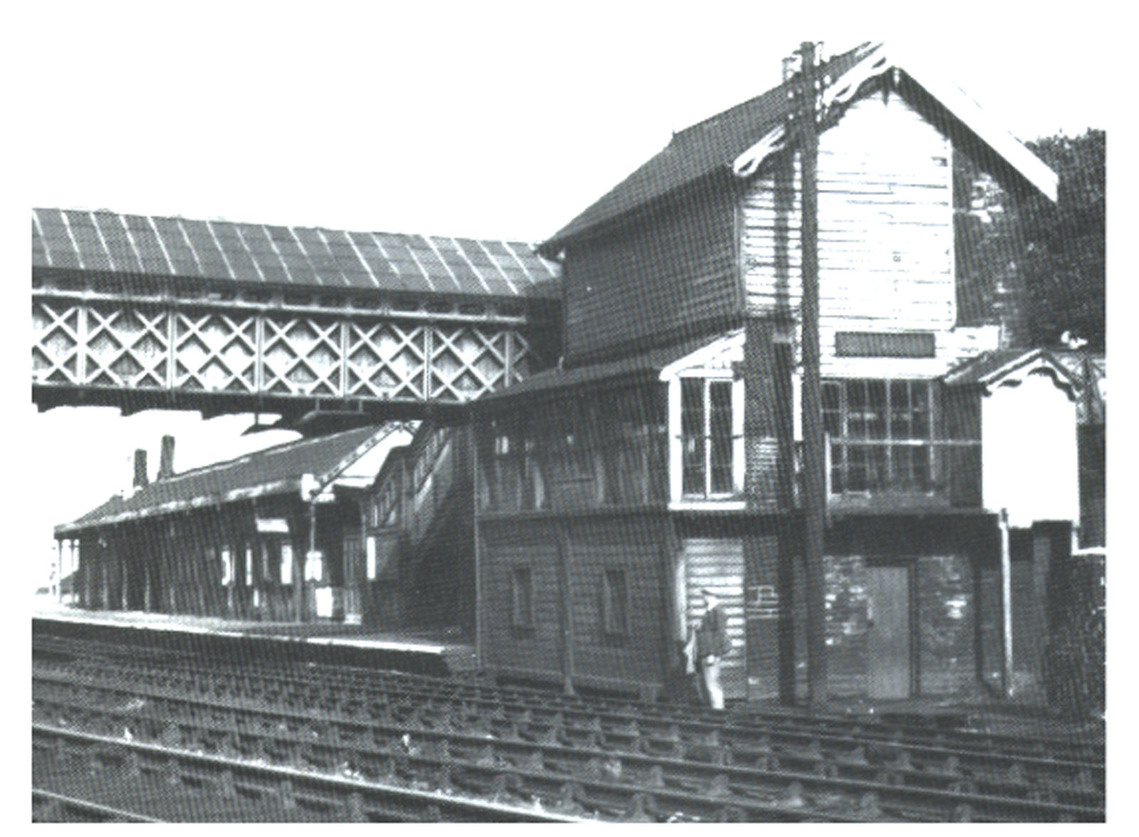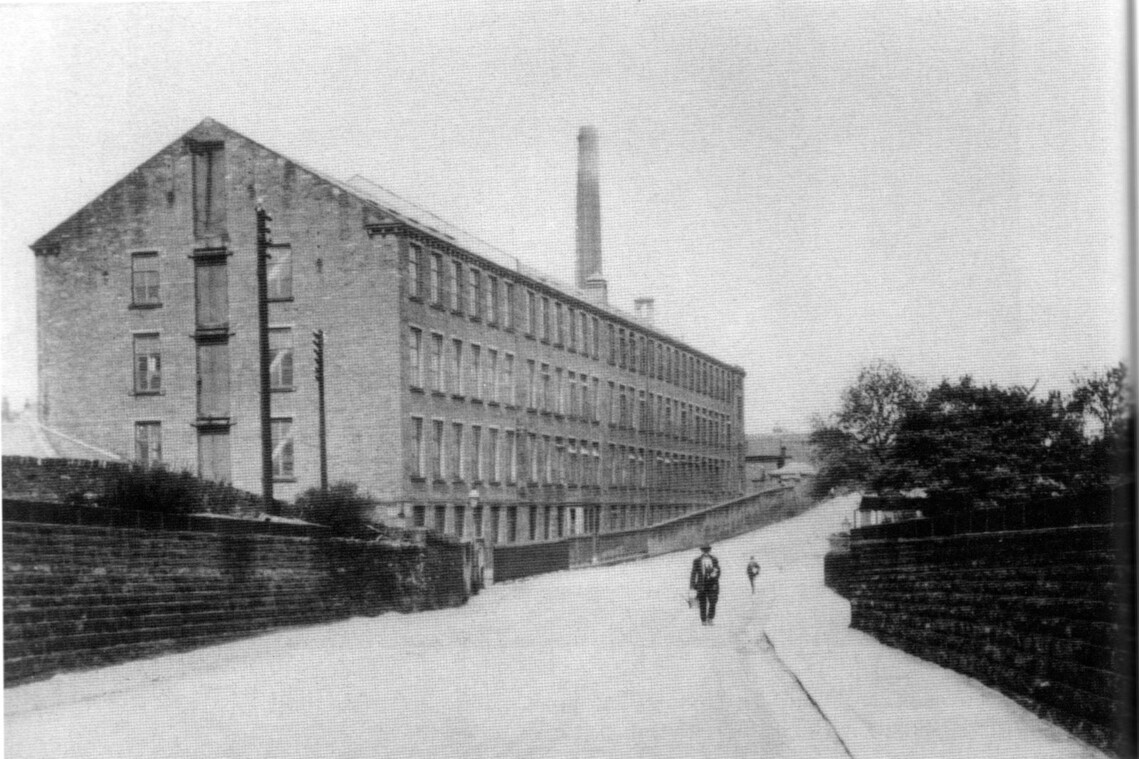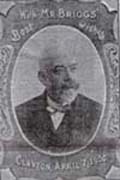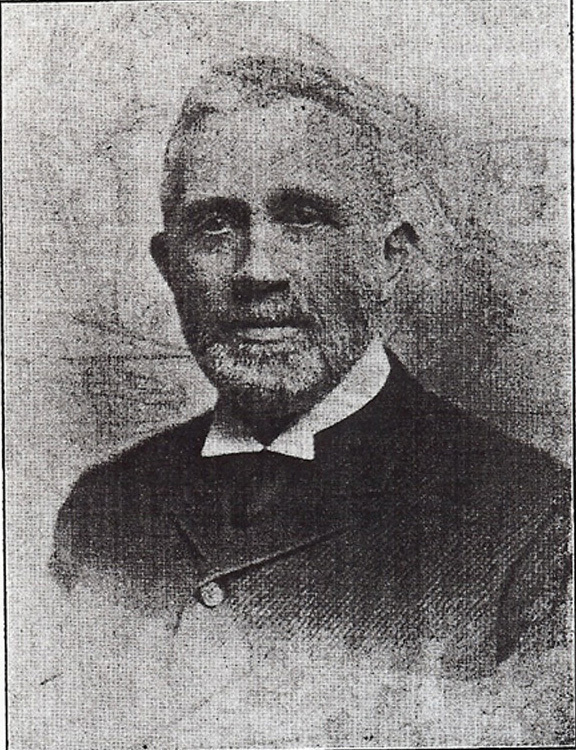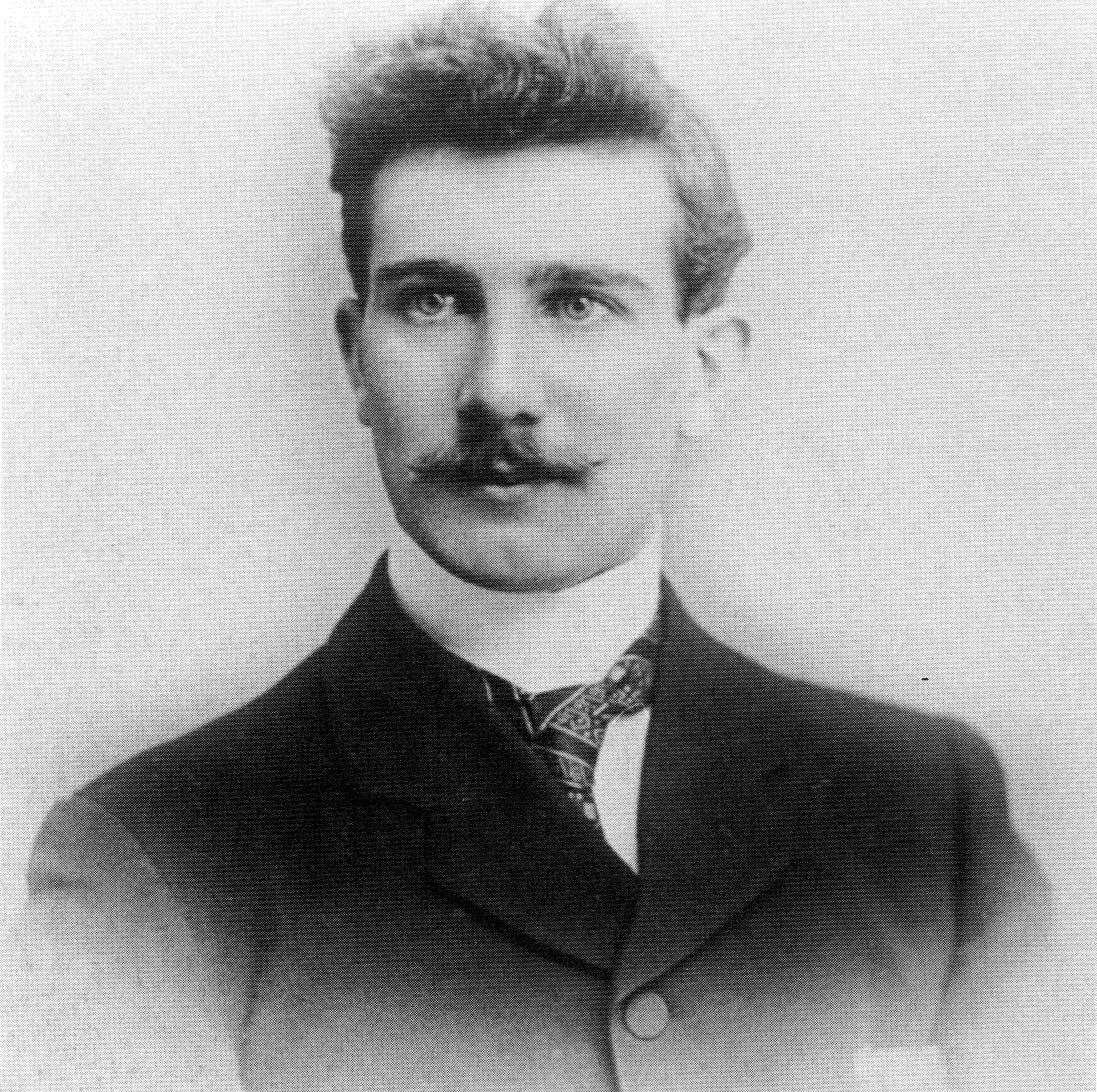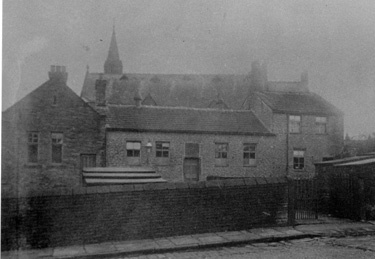Religion
| At the beginning of the 19th century there was no place of worship in Clayton; the various denominations worshipped in other places: the Baptists at Qucenshead (later Queensbury); the Churchmen at Thornton; the Independents at Kipping and the Wesleyans at Birstall, Shelf and, after 1807, at Old Dolphin. In 1819 the old village school was opened as a weekday and Sunday school and as a preaching place for all denominations. The Sunday School scholars were taught by members of all denominations, while on Sunday evenings worship was led by each in turn. Eventually, each denomination was able to erect its own building. Baptists: The Baptists, having previously wors hipped at Queenshead, decided in 1827 that they wanted their own place of worship in Clayton. Despite opposition from the church at Queenshead, the Clayton Baptists determined to go ahead and began meeting in rented rooms at Deep Lane Top. After appealing to the General Baptist Conference of Yorkshire and Lancashire at Shore on Easter Monday 1828, they continued to meet in rented rooms though still keeping their connections with the Queenshead Church. In August, after a further appeal to Conference, the Queenshead Church gave recognition to the Clayton Baptists as a Christian Church, and on 7th August the first official service of the Clayton Baptist Church was conducted by Jeremy Ingham of Halifax, and, in the afternoon, eleven people were baptised in the Lidget Beck near Bulgreave Wood. In November 1828 steps were taken towards building a new chapel, but it was not until March 1830 that definite plans were made and the foundation stone of the new chapel in Clayton Lane was finally laid on Easter Tuesday afternoon of that year, the land having been donated. The first baptism took place on 8th August before the chapel was finished. It opened for divine worship on Friday 22nd October 1830, with a small congregation attending in the morning and a large one in the evening. The first Sunday service on the 24th October was also well attended, in fact there was not room to fit in all who went. The cost of the chapel was £5,300, and the first trustees were Joseph Andrews; George Andrews, snr; Isaac Wilson; George Andrews, jnr; William Dewhurst; Jeremiah Dewhirst; John Andrews; Benjamin Sowden; Daniel Wilson; Joseph Cockroft and John Drake. A Sunday School was commenced on 27th February 1831. George Andrews, snr. was the first pastor until his death in May 1831, and on 11th December 1831 it was agreed to invite Brother John Taylor to be minister and to teach school, on condition that he receive15 per year. Brother Taylor was minister for five years. The numbers continued to grow, and in 1844 the premises were enlarged. By the time the Church’s Jubilee came round in 1880, the total number received and baptised since the opening was 412. On Sunday, 24th October 1880, special services were held and a tea on the following Saturday. In September 1890 the foundation stones for a new building in School Street were laid by Mr. Edmund Hirst, after a procession of members of all ages round the village, led by the Clayton Silver Prize Band. On Tuesday 13th October 1891 the new chapel was opened, and on 12th October 1892 a new organ was given by Mr. & Mrs. Asa Briggs during the Rev. Hambley’s ministry. Special services followed both these events and were well attended. Even in the early part of this century the Sunday School had 200 scholars, and there were many activities for all age groups, as well as rambles, trips and an annual tea when a meal was provided for around 300 people. Pew rents were paid and almost all were occupied. At Anniversary and other special services the building was packed to capacity. On Christmas Day 1927, early in Rev. W.G. Brown’s ministry, the church was lighted by electric light for the first time, and on Sunday 17th June 1928 an electric organ blower was first used. Centenary services were held on 21st and 28th October 1928 and a re-union tea on Saturday 20th October. A new lower ceiling and improved lighting were installed in 1967/8. Rev. J. Tinker was minister from 1938-54, followed by Rev. M. F. Williams (1955-60); Rev. J.P. Williams (1960-65); Rev. Wm. Nelson (1966-78). The present minister is Rev. David Richardson. In 1978 the Baptists celebrated their Ter-Jubilee, still a flourishing church. Unfortunately, the building became affected by dry rot and was finally demolished in July 1982. The congregation, however, was still strong and continued to meet every Sunday in the nearby middle school. Foundation stones were laid for a new building on the same site on 11th February 1984, by Mrs. Beatrice Robinson, whose uncle laid thefoundation stones for the old building in 1890. The building was completed during the summer of 1984 and opened for worship on 1st September. Methodists: After worshippingas farawayas Birstall and Shelf and, from 1807, at Old Dolphin, Clayton Heights, the first Methodist Chapel in Clayton was built in Clayton Lane in 1834, the opening service taking place on 3rd October of that year. The Sunday School work would appear to have begun at the same time, as it is recorded that the first anniversary was held in 1835. The first actual Sunday School building was opened in 1858, and a piano was acquired and a tea party with entertainment held. By 1875 the number of scholars had reached 200, and land for a new Sunday School building opposite the chapel was purchased. The Sunday School Anniversary that year was a great occasion; Samuel Ackroyd Esq., of Great Horton, had offered to give £50 provided that the Collection realised £150. A real effort was made, the collection amounted to £168.l2.3., making, with Mr. Ackroyd’s donation, £2 18.12.3. A grand bazaar, the first in Clayton, was held in 1876 in aid of the building fund, and the memorial stone for the school was laid on 19th September 1877 by Rev. W.O. Simpson, the school being opened on Good Friday 1878. The Sunday school work included reading and spelling. The present chapel was built in 1888, and the opening service was held on 22nd May 1889. There were seats for 650 people in the chapel, and in the late19th/early 20th centuries pew rents were paid monthly. Most of the pews were taken, and it was customary for people to keep their own pew clean. There was also a large amount of acti vity for all age groups, with youth clubs, men’s and ladies’ societies, the Wesley group and various guilds, as well as frequent socials and an annual concert. Another great occasion was the Sunday School Anniversary, or “sitting up”, as it was commonly known, when a stage or platform was erected in front of the pulpit, and the scholars, assisted by the choir, led the singing. There was also an annual procession through the village each Whit Tuesday followed by tea. In 1907 enlargement of the Sunday School building became necessary, and in February of that year a Fete with a Bazaar was held to raise funds for this. Several firms sent goods to sell at the bazaar, which was held on four afternoons. There were several stalls, all named after Greek towns and islands, as well as a café and coffee room and entertainment each evening. After many years using the old organ which had been erected in the old chapel in 1864. the congregation and friends raised the sum of £2,500 in 1926 and a new organ was erected in memory of the late Mr. Edwin Ward who was organist and choirmaster from 1864 to 1883, and a chorister from 1883 to 1905. A special service was held on Saturday 1st May 1926 to dedicate the organ, and the opener was Mr. Angus Ward who had been organist from 1883 to 1918. From 1921 the organist for many years was Mr. Harry Westerman, and in February 1949 the Yorkshire Observer Budget paid tribute to the way he had kept the organ in immaculate condition. Mr. Westerman also conducted the Glee Union, with which he enjoyed a highly successful career from 1934 to 1940. The same newspaper article described the various workings and casing of the organ which it said looked newly installed after 23 years. Sadly, the organ has now been sold to a gentleman in Chesterfield who has been able to reconstruct it. In October and November 1934 Centenary celebrations were held, with social evenings on Saturdays 27th October and 3rd November and special services on Sundays 28th October and 4th November, the last date a special musical Sunday. In 1970 the Sunday School building was closed and the Church building modified for dual-purpose use. On Saturday 30th January 1971 there was a special service of opening and dedication of the church after the modification was completed. The service was followed by a musical evening and refreshments. Sadly, the building is now in a state of disrepair and the members hope to have it demolished and replaced by a modern building which would be used as both a place of worship and a social centre. However, the church has recently been designated a “listed building” and therefore planning permission is needed. The Parish Church: Prior to 1842 there was no resident Church of England clergyman in Clayton and, with no building of their own, the Churchmen shared the school and walked to Thornton. Later a lecture room was provided by Mr. John Hirst, of Clayton House, in a building attached to his premises, where the Anglicans worshipped for nine years. In 1842 the Vicarof Bradford, Dr. Scoresby, appointed Rev. W. Kelly to the charge of the district, and he was followed by Rev. Galvin and then Rev. Francis Earle. Whilst the Rev. Earle was curate, on 29th May 1849, the foundation stone for the long-awaited Parish Church was laid by Mr. John Hirst, of Clayton House, who had given the site; a grant for £1,000 having been obtained from the Incorporated Church Building Society. The church was finally opened and licensed for public worship on 19th January 1851, and on 23rd January the Bradford Observer carried the following report: “The newly-built and handsome Church of St. John the Baptist, Clayton, was opened for divine worship on Sunday last: the Lord Bishop havinggranteda license for only a brief period previously to an expected endowment fund being obtained and the consecration of the edifice. The Rev. Dr. Burnet, Vicar of Bradford, preached in the morning and Rev. F. Earle in the afternoon. The congregation on both occasions was very numerous. Although the occasion was one for congratulations and pleasure, there was one circumstance which tended to mingle sorrow with the joy of this occasion. It was the fact that the Rev. Earle preached his farewell sermon (and a beautiful and affectionate discourse it was) on Sunday afternoon on the very day in which the church was opened for divine service. The collection in aid of the fund for providing necessary articles required in public worship amounted to upwards of £71. Unfortunately, the £1,000 endowment for the maintenance of a minister was not immediately forthcoming, but at last, after a small endowment fund had been raised and invested, the church was duly consecrated on 25th August 1856 by the Bishop of Ripon, Dr. I.ongley, later to become Archbishop of Canterbury. Despite inclement weather, there was a large assembly of clergy and laity. The Bishop was received at the gates by Rev. Dr. Burnett, Vicar of Bradford; Rev. T.H. Manning, incumbent of the Parish; the churchwardens and a number of clergymen and, after robing, was conducted to the principal entrance of the church where a petition was presented praying his L.ordship to consecrate the church and burial ground. After having performed the consecration, the Bishop and Rev. Manning led the service, the choral parts being sung by the choir of Bradford Parish Church. After the service, the burial ground, land for which had mainly been provided by Mr. Hirst, with a small portion purchased from the poor law guardians for Clayton, was also consecrated. Soon afterwards the Vicarage was built on a site given by Mr. G. Barron. This was demolished in 1968 and replaced by the present modern building. The church was described by the Bradford Observer at the time of its consecration as a “comely and very substantial structure, in the decorated character, with a broad tower at the West End”. The seats were all open and many were free, although some pew rents were charged. The church was very well attended by both rich and poor, and had several benefactors and good church workers. In common with the other denominations, anniversary days were very special. In 1879 a clock was built into the tower and renovated in 1933, the cost of repairs being generously undertaken by J.E. and Alfred Wilman and sisters, of Hadfield. At this time Westminster chimes were added, together with a new face pointing up the Avenue. In 1887 the Chancel was restored and better vestry accommodation for the choir provided, the work being begun in consequence of a generous offer of a new organ by Mr. Joseph Benn and family; a pulpit by Mr. Jonathan Barker; a new reredos by Col. H.S. Hirst and an eagle lectern by Mrs. Sarah Ridings, who had been a worshipper since the opening day. Through the years several beautiful mosaics have been added, and in 1914 the aisles and chancel were completely restored in marble by Harrison and Christina Benn in loving memory of their daughter Mabel who died in 1913. In 1934 a new chancel screen was donated by Mr. Charles E. Seed, in remembrance of William, Mary Jane and Eva Jane Seed. This was dedicated by the Bishop of Bradford at a special service on 9th September 1934. The side chapel has also been transformed through the years by numerous gifts, and there are memorials at the back of the church dedicated to those who lost their lives in both World Wars. In 1917 Harrison Benn also set up a trust fund of £12,000, administration of which was in the hands of the Vicar and Churchwardens with Diocesan trustees as arbitrators in case of differences arising. In addition, Mr. Benn made an interest-free loan of £2,000 for the renovation fund. The Vicar and members of the vestry, in expressing their very sincere thanks to Mr. Benn, forecast that the benefits of the trust would remain as long as the church remained; a true prophecy, as good use is still made today of the “Harrison Benn Trust Funds”. In 1951 the Church celebrated its Centenary, the main celebrations running from 21st to 28th January, with several services and a re-union tea and gathering on 27th January, for which a cake in the shape of the church was made by Mrs. I. Turner, Mrs. I. Townsend and Mrs. E. Wilson. A piece was also given to every Sunday School scholar at the end of the children’s service on Sunday 28th January. The first service on Sunday 21st January, at which the preacher was the Provost of Bradford, was extremely well attended, with chairs being put in the aisles and in the chapel under the tower. Letters were sent to all couples who had been married in the church, inviting them to attend. A special centenary copy of the Parish magazine was also issued. Looking back over the years, the Vicar, Rev. G.A. Harding, wrote “The Church has been to three generations of men a minister of strength in the hour of trial and an encouragement in the days of joy. The heritage that has been left us in our Church by those who have worshipped God within its walls and served Him in their lives is a goodly heritage and gives us an example to follow in the centenary year”. Sadly the centenary celebrations brought to a close Rev. Harding’s ministry, and he died in March 1951. The Church has still a good, regular congregation and Sunday School, and celebrated its 130th birthday in 1981 with a flower festival. The Vicars of Clayton Parish Church from its opening to the present dayare: 1851 Rev. T.H. Manning; 1870 Rev. A.P. Dawson; 1873 Rev. G. Leatherdale; 1885 Rev. J.E. Gerrard; 1912 Rev. H.F. Flynn; 1931 Rev. G.A. Harding; 1951 Rev. A. Simmons; 1967 Rev. A.W. Underwood; 1976 Rev. C.P. Hutchinson. The present incumbent, whose induction was in November 1983, is Rev. J.A.N.B. Howell. Although there was a degree of rivalry and resentment between the three denominations, on the whole they got on reasonably well and a very memorable occasion each year was the annual united procession round the village at Whitsuntide. This continued for many years and was always a very special occasion. During the early 1960s the Clayton Council of Churches was formed, which included the three above-mentioned denominations and the Roman Catholics, who had joined the village later, and this is still thriving today. United services are held regularly, and there is a strong ecumenical spirit in Clayton. Roman Catholics: In 1930 there were only about six Catholic families in Clayton, who used to go either to St. Williams, on Ingleby Road, or else to Thornton or Quecnsbury, none of these alternatives being easy as they all involved a long walk. Gradually the number of Catholics increased, but it was the soldiers billeted in Clayton during the Second World War who first brought the mass to the village in 1940. Mass was first celebrated in Central Hall at Green End in an upper room. Shortly afterwards Church House was used, followed by the hail of the Board School. The Thornton priest, Father W. Backhouse, officiated. In 1947 the Leeds Diocese purchased “Lidget Grange”, on Bradford Road, a good solid residence with a barn. This barn, after the men of St. Williams and Clayton had closed in the rafters of the upper storey with panelling and cleaned and decorated it, formed a chapel which was reached by a wooden staircase on the outside of the building. The room was comfortable, warm and friendly, and packed to the door every Sunday for Mass. It was served by the priests of St. Williams, and the worshippers were enthusiastic and happy to have their own place in Clayton at last. However, it soon became obvious that this building was not safe enough to be used by so many people, and a new school building was opened on 4th May 1954 by the Bishop of Leeds, later to become Cardinal Heenan. The Mass was forthwith transferred to the new school hall, and the Parish of St. Anthony was created in 1954 with Father Thomas Kearns as its first Parish Priest and a congregation of 300. The Franciscan sisters of Littlehampton arrived to take charge of St. Anthony’s school, and “Lidget Grange” became St. Anthony’s convent. The new Church of St. Anthony, built between the school and the convent, was opened on 27th July 1961 by the Bishop of Leeds, the congregation having grown to 630. The church was described as “high, wide and liturgical”, and the setting, designed to give an uninterrupted view of the Altar to as many as possible, is in three sections, nave, gallery and Lady Chapel. The cost of the church was £30,000, with a further £4,000 for the furnishings. Father Kearns left on 22nd April 1966 and was succeeded by Father Patrick Henry. During the following years the congregation continued to grow and the Parish flourished. By the end of 1971 the debt on the church had been cleared and a consecration ceremony was held on 2nd October 1974 by Rt. Rev. Gordon Wheeler, Bishop of Leeds. A smart hall has been acquired through hard work and fund-raising, and the various societies and committees take an active part in the life of the village, and do much charitable work both in the village and further afield. St. Anthony’s is also a member of Clayton Council of Churches and takes an active part in united worship. Father Henry left the Parish in 1982 and was replaced by the present priest, Father B. Lilly. Gospel Hall: A more independent church is the “Gospel Hall”. The members held their meetings for many years in the village school. Theirs was a simple, devotional, religion and any of their members, or “Brethren” as they were known, could preach. After the school was made into a library, the Brethren continued to use the building for some time, but felt restricted and were determined to build their own chapel. All the able- bodied assisted, and by sheer effort and will power, a strong faith, and supervision from a sympathetic builder, their chapel on Bradford Road was completed in 1927 and opened in March 1928 by Richard Stammers who, after having been converted by a travelling preacher speaking near The Wells, had been for many years a faithful member of the Gospel Hall and widely respected in the village. The chapel is still there and their services are held on Sunday mornings and evenings, with midweek bible study and prayer groups. For some years there was also a Latter Day Saints meeting room on Clayton Lane. Clayton has then progressed in many ways over the years. Always a self-sufficient, quite closely-knit society, it is still possible to find signs of the traditional village life and community spirit, and many people would be sorry to see it become “just another district of Bradford. |
|
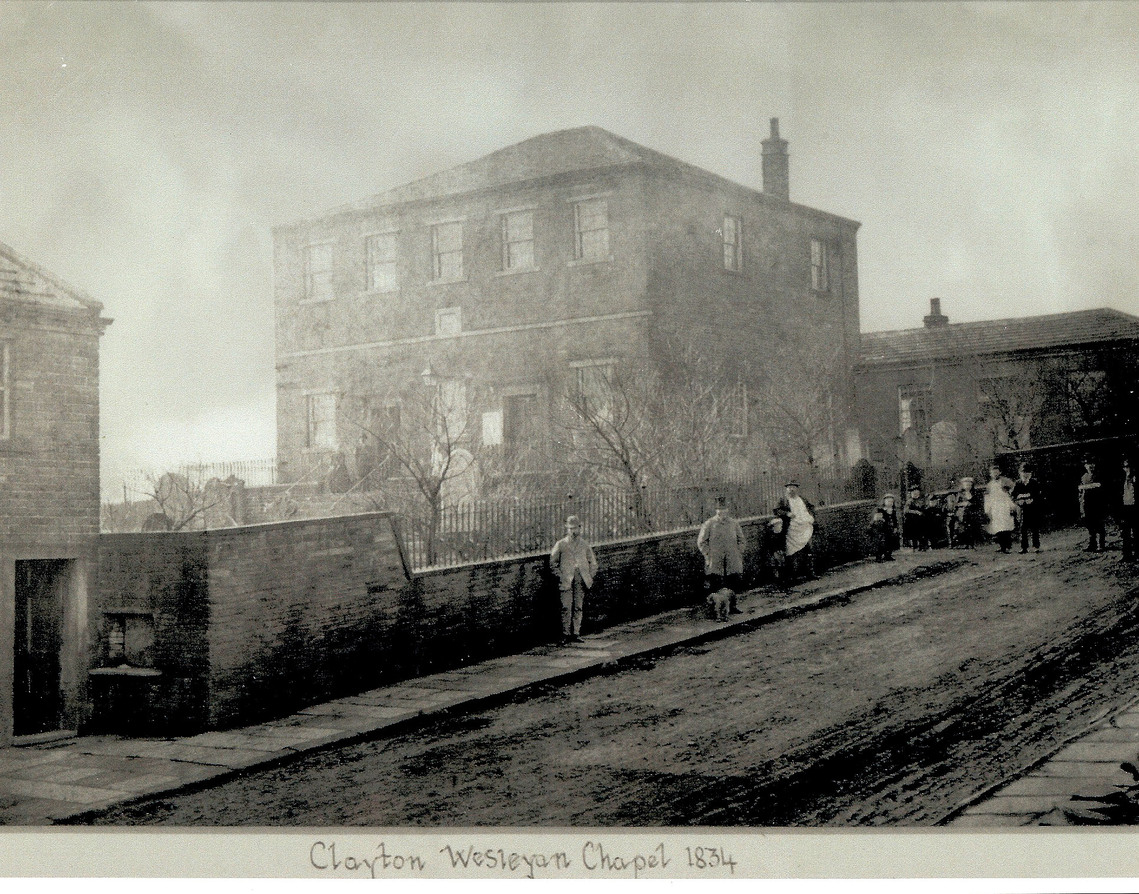
Wesleyan Chapel 1834
|
|
